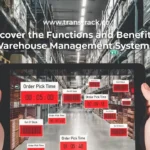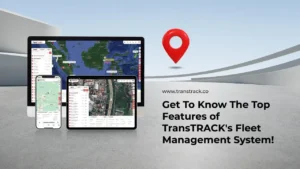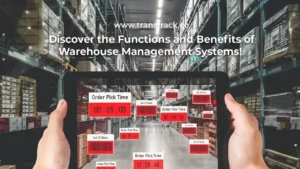Modern Seat Belt Function and Benefits from TransTRACK
Posted on June 25, 2024 by Nur Wachda Mihmidati

Driving safety is an aspect that should not be ignored by anyone on the road. One of the most basic yet crucial components in keeping drivers and passengers safe is the seat belt. Although it may seem simple, seat belts play a huge role in protecting lives and preventing serious injuries during an accident. With the development of technology, seat belts continue to improve, both in terms of materials, design, and additional features such as sensors. In this article, we will discuss the main functions and benefits of seat belts, as well as learn more about modern technologies such as SeatBelt Sensor from TransTRACK that make seat belts more effective and reliable.
Main Functions and Benefits of Seat Belts
Seat belts are one of the most important safety devices in a vehicle. Here are its main functions and benefits:
Seat Belt Functions: 1. Keeps the body in the seat during an impact
The seat belt serves to keep the body in the seat during a collision or accident. In an emergency situation, the inertial forces generated by an impact can cause the body to be propelled forward or sideways with enormous force. Seat belts reduce this movement by securing the body to the seat, thereby reducing the risk of injury that can occur from being slammed or bounced around in a vehicle.
Seat Belt Function: 2. Reduces the risk of being thrown out of the vehicle
One of the most dangerous risks in an accident is the possibility of being thrown out of the vehicle. During a violent impact, passengers who are not wearing seat belts can be pushed out through an open window or door. Seat belts ensure that the body stays inside the vehicle cabin, reducing the risk of being thrown out and suffering fatal injuries on the road or being hit by another vehicle.
Seat Belt Function: 3. Spreading the force of impact to stronger parts of the body (hips and shoulders)
Seat belt design allows the force of impact to be spread to areas of the body that are stronger and better able to withstand pressure, such as the hips and shoulders. The hips and shoulders have larger bones and stronger muscles compared to the rest of the body. By distributing impact forces to these areas, seat belts help reduce the potential for severe injuries that could occur if those forces were concentrated on more vulnerable parts of the body, such as the abdomen or chest.
Seat Belt Function: 4. Reduces the risk of serious injury to the head, neck and spine
One of the key benefits of seat belts is their ability to protect the head, neck and spine from serious injury. In an accident, sudden and uncontrolled movements of the body can cause head impacts to the interior of the vehicle or lead to whiplash neck injuries. Seat belts help hold the body in the correct position, reducing the risk of these injuries by limiting unwanted movement and keeping the body stabilized.
Seat Belt Function: 5. Ensures the body stays in the correct position during travel
During travel, especially in situations where the driver has to make sudden maneuvers such as hard braking or sharp turns, seat belts help keep passengers in the correct seating position. By holding the body in place, seat belts help reduce the risk of injury that can occur from shaking or sudden changes in position, as well as helping the driver stay focused and better control the vehicle.
Seat Belt Function: 6. Helps airbags perform effectively
Airbags and seat belts are designed to work together to provide maximum protection. Airbags alone cannot provide optimal protection if the passenger is not in the correct position. Seat belts ensure that passengers remain in place so that airbags can properly inflate in front of them, providing the necessary cushioning to prevent head and chest injuries. Without seat belts, airbags may not function effectively and may even cause additional injuries.
Seat Belt Function: 7. Driver and Passenger Safety
Seat belt use is the simplest and most effective step in improving road safety. Statistics show that seat belts can reduce the risk of fatal injuries in accidents by up to 50%. Therefore, wearing a seat belt is an important act that can save lives for both drivers and passengers. The driver is also responsible for ensuring that all passengers are properly buckled up during the trip.
Seat Belt Function: 8. Legal Safety
In many countries, seat belt use is required by law. Compliance with these regulations is not only important for personal safety but also to avoid legal consequences, such as fines or other sanctions. The implementation of seat belt laws aims to improve overall road safety and reduce the number of injuries and deaths from traffic accidents. Therefore, complying with these rules is the responsibility of every road user.
Modern Technology in Seat Belts
TransTRACK has introduced advanced technology in seat belt systems with the development of the SeatBelt Sensor. This sensor is designed to enhance user safety and convenience with a range of innovative features. Here are some of the key features of the TransTRACK SeatBelt Sensor:
Seat Belt Usage Detection
The SeatBelt Sensor can detect whether the seat belt has been worn or not. The system alerts the driver and passengers if seatbelts have not been used, helping to ensure that all passengers are buckled up before the vehicle starts moving.
Audio and Visual Warnings
If the system detects that the seat belt is not being used, there will be audio and visual warnings that appear on the vehicle’s dashboard. This helps remind passengers to wear their seat belts immediately.
Integration with Vehicle Systems
The sensor can be integrated with other vehicle systems, such as airbags and braking systems. In emergency situations, information from the SeatBelt Sensor can be used to optimize the performance of other safety systems, increasing protection for passengers.
Seat Belt Status Monitoring in the Rear Seat
This technology applies not only to the front seats, but also to the rear seats. This is especially important for the safety of children and rear-seat passengers, which is often overlooked.
Advantages of Modern Seat Belts Compared to Conventional Seat Belts
Modern seat belts have undergone various technological and design improvements compared to conventional seat belts. Some of the main advantages of modern seat belts include:
Use of Stronger and More Comfortable Materials
Modern seat belts are made from materials that are stronger and more comfortable to wear. The materials used have better resistance to impact and wear, and are designed to provide optimal comfort for the user.
Pretensioner and Load Limiter Technology
Modern seat belts are often equipped with pretensioner technology that can automatically tighten the belt upon impact, reducing the forward movement of the passenger. In addition, load limiters help reduce pressure on the passenger’s chest by slightly loosening the belt when the impact force reaches a certain point, reducing the risk of injury.
Integration with Other Safety Systems
Modern seat belts are designed to work synergistically with other vehicle safety systems, such as airbags and stability control systems. This integration ensures that the entire safety system works together to provide optimal protection during an accident.
Automatic Adjustment
Many modern seat belts can automatically adjust the height and tension according to the passenger’s posture and weight. This ensures that the seat belt provides appropriate and comfortable protection for all passengers, without the need for manual adjustment.
Advanced Sensors and Warnings
In addition to TransTRACK’s SeatBelt Sensor, many modern seat belts are equipped with a variety of advanced sensors that can provide early warnings to drivers and passengers if the seat belt is not being used properly, or if there is a problem with the seat belt system.
With these advantages, modern seat belts offer a much higher level of safety compared to conventional seat belts. Technologies such as TransTRACK’s SeatBelt Sensor ensure that users not only get maximum protection, but also greater comfort and awareness of the importance of using seat belts correctly.
Seatbelts are a crucial element in driving safety, providing significant protection in emergency situations and reducing the risk of serious injury. From holding the body against the seat during impact to ensuring effective airbag performance, seat belts play a vital role in keeping drivers and passengers safe. Modern technologies, such as the SeatBelt Sensor from TransTRACK, have taken seat belts to the next level with advanced features that enhance safety and comfort.
With TransTRACK’s SeatBelt Sensor, you can ensure that your seat belt is always used correctly and functioning optimally. Don’t wait until an accident happens to realize the importance of seat belts. Improve the safety of you and your family with the latest technology from TransTRACK.
Recent Post
Topic :
 Bahasa Indonesia
Bahasa Indonesia









